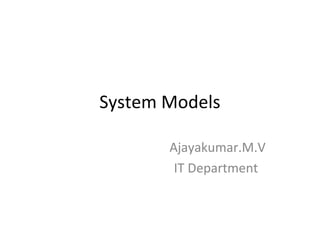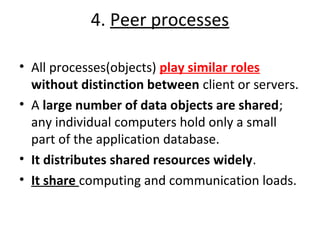The document discusses different system models for distributed systems. It describes two main types of models: architectural models and fundamental models. Architectural models consider the placement of components across a network and relationships between components. Variations of the client-server model are presented, including mobile code, mobile agents, network computers, and thin clients. Design requirements for distributed architectures including performance issues, quality of service, caching/replication, and dependability are also covered.
















































